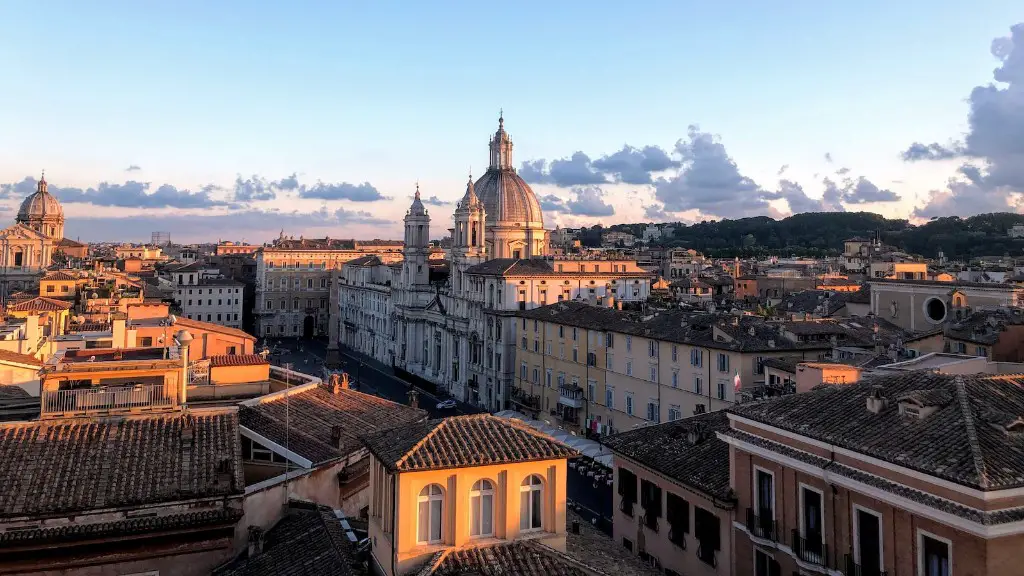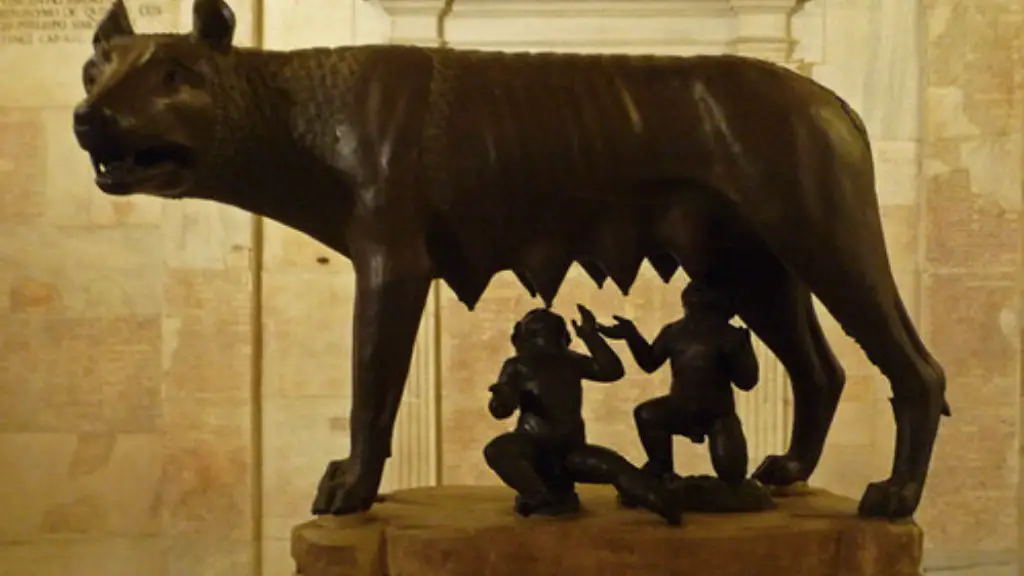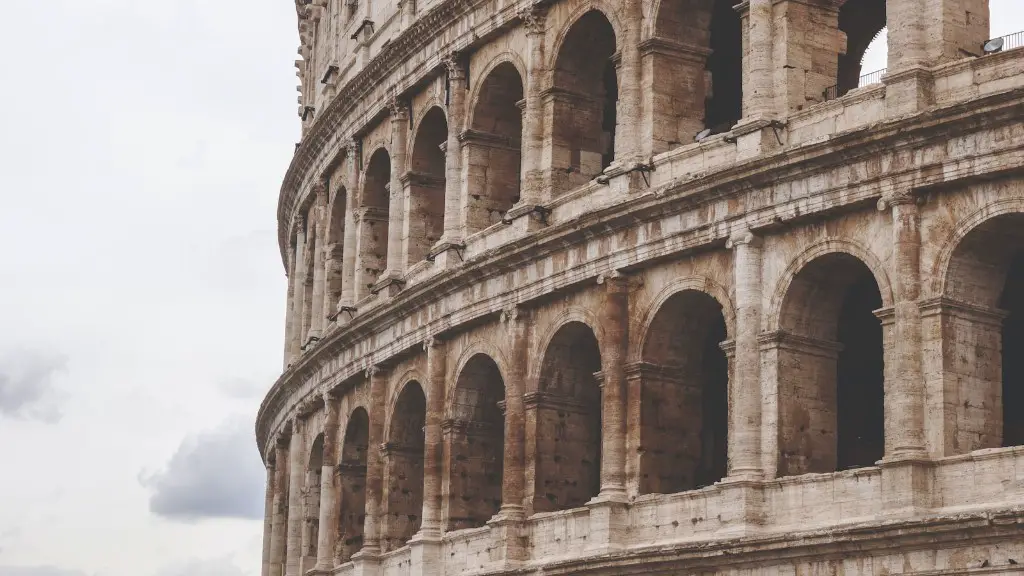Economic Struggles
Ancient Rome was a thriving metropolis with a powerful economy. It had access to abundant resources and a large labor force. It seemed the unstoppable city. Yet its downfall was not due to any military defeat or civil war. The fall of Rome was largely the result of economic struggles.
In the late third century, Rome was struggling with a severe financial crisis. The city had become severely overpopulated and its resources were being spread too thin. Problems in the economy were exacerbated by ongoing wars and military campaigns, which were expensive and had little economic return. At the same time, the government was rampant with corruption and oppressive taxation. All these factors put an immense strain on the economy, leading to famine and property shortages.
The collapse of the economy had far-reaching consequences for the city. The devaluation of the Roman currency caused inflation, lowering the purchasing power of citizens and making it difficult to pay even the most basic taxes. This ultimately reduced the revenue to the state, putting pressure on public services, such as roads and aqueducts, leading them to deteriorate.
As the government grappled with its financial difficulties, its power slowly dwindled. This resulted in a decrease in citizen morale and an increase in crime. Citizens no longer felt secure, leading to a decline in productivity and a further weakening of the economy. The city was becoming increasingly lawless and chaotic.
The economic turmoil ultimately led to Rome’s decline. The government was unable to maintain the stability of the state and citizens increasingly looked to regional leaders or powerful families for protection and support. This weakened the power of the central government and Rome eventually collapsed.
Dwindling Population
As the economic situation deteriorated, the population of Rome began to decline. With increasing poverty, disease, and famine, many citizens were forced to flee the city in search of a better life. The numbers of the rich and powerful dwindled, reducing the ability of the government to maintain order. The size of the army also shrank, making Rome less able to defend itself from invaders. This led to the increase in raids by Germanic and Barbarian tribes, who had begun to take advantage of the weakened state of Rome.
The decline in population caused many other problems. For example, the agricultural output of the city decreased significantly. This, combined with the disruption of trade, meant that many Romans were unable to get basic necessities, leading to widespread poverty. The decline in population also led to a decline in the city’s infrastructure, with roads, baths, and aqueducts falling into disrepair, leading to further decline in the quality of life in Rome.
Political Instability
The decline of Rome was also caused by political instability. The government was increasingly unable to bring order to the city. This was due to the fact that Rome was divided into a multitude of small states, each governed by their own leader. This resulted in infighting and the breakdown of the central government. This, coupled with the decline in the influence of powerful families, made it virtually impossible for Rome to continue as a unified state.
The decline of the central government also led to the rise of powerful regional leaders, who had their own agendas and were not always supportive of Rome. This weakened the power of the city and caused further decline.
Invasion of Rome
The decline of Rome eventually led to its downfall. As the Roman Empire weakened, Invaders saw an opportunity to take advantage of the situation. The Goths, Visigoths, and Vandals were able to seize control of the city and take its resources.
Rome’s forces were unable to fight off these invaders, as its army had been significantly weakened due to the decline in population. This allowed the Goths to completely take control of the city, devastating its economy and infrastructure. This further weakened the empire, ultimately leading to its downfall.
Political and Religious Changes
The decline of Rome was also partly due to changes in politics and religion. As the influence of the central government weakened, its religious influence diminished as well. This allowed local leaders to impose their own beliefs on their citizens and ultimately undermined the authority of the state.
As the religious and political systems of Rome collapsed, other religions, such as Christianity, were able to take root, further weakening the state’s control. This ultimately led to a decline in the population, further weakening the city.
Social Unrest
Social unrest was also a contributing factor in the decline of Rome. As the economy declined, the people of Rome became increasingly restless. This led to the emergence of various rebellions, which put the city in further turmoil.
The government was unable to handle the unrest, leading to further decline. This combined with the political and religious changes assisted in the sinking of the Roman Empire.
Decline of Culture
The decline of Rome was also caused by the decline in culture. Rome was once a hub of culture and art, yet over time this culture faded away. The decline of the economy led to a decrease in the city’s artistic output, as citizens lost the means to support artists and cultural production. This, combined with the disruption of trade and the influx of foreign conquerors, caused Rome to lose its cultural identity.
Furthermore, the decline in culture assisted in the decline of Rome’s political system, as citizens’ attachment to the state declined. This contributed to the fall of Rome.
Decline in Morale
The decline of Rome was also due to a decline in morale. As the city became increasingly lawless and chaotic, citizens lost faith in the state and its ability to protect them. This led to an decrease in productivity, as citizens were unwilling to contribute to the state if they felt it was to no avail. This further weakened the state, and ultimately led to its fall.
Conclusion
The decline of Rome was a complex process. It was largely caused by economic struggles, a dwindling population, political instability, invasion of Rome, religious and political changes, social unrest, and a decline in culture and morale. Ultimately, these factors combined to form a powerful force that Rome was unable to withstand.


